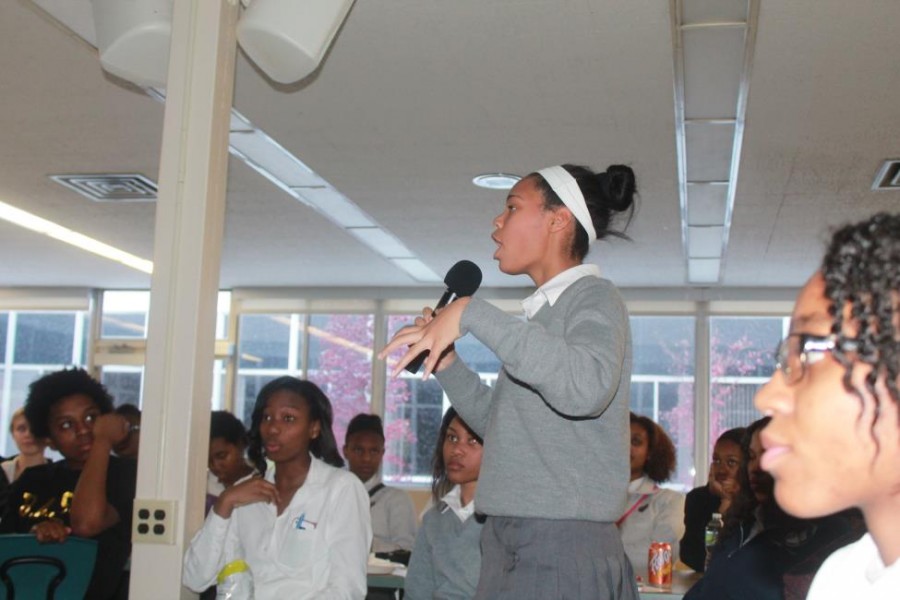Cracking down on “color-code”
Mercy’s BASE (Black Awareness Society for Education) hosted a forum with U of D’s BASE this month on the topic of colorism. Colorism is segregation based upon skin tone within a racial group. For centuries colorism has negatively affected African-Americans, and in 2014 it is still a raging topic within the Black community.
Colorism originated during slavery as skin tone was often used to determine a slave’s place. Usually, lighter-skinned slaves worked in the house, and darker slaves worked in the fields. This form of prejudice created disunity among blacks as a whole. Although all blacks were considered property, the masters had higher regard for the house-slaves than the field-slaves; thus, creating tensions among the two. Despite slavery’s abolition in 1863, the psychological effects of colorism still linger.
Logically, the way a person acts cannot be dictated by his or her pigmentation; however, personality traits are continually equated with skin tone. For example, some say that lighter-skinned males are ‘softer’ and more ‘emotional’ or that lighter-skinned females are ‘uppity’ and ‘bougie’. These false-truths are often told as jokes, but they create discord among African-Americans.
At the forum students shared their opinions and experiences and were educated on the seriousness of self-segregation.
“I gained a knowledge of the severity of colorism, ” said junior Aaron Abney. “I was able to see examples of it, and now I can be more conscious [of it].”
Attendees were presented with information regarding the prevalence of colorism in today’s society. Students were shown an image of a young black girl with two dolls. The girl was asked to choose which doll was pretty and which was ugly. She chose the white doll to be pretty, and the black doll to be ugly. This girl, no more than 5-years-old, had the mindset that being black wasn’t beautiful.
The question is: How can the cycle of self-hatred and tension among African-Americans be undone?
First, it is pertinent to educate one another on the origins of colorism. It must be recognized that colorism was a system put in place strictly to form division. This knowledge is pivotal for African-Americans to overcome the malicious ways of inequality.
Second, awareness is necessary to break the mental stronghold of self-segregation. Breaking the silence will invoke conversation and change. This will cause people to be mindful, forming unity and acceptance amid the races.
Finally, language and tone must be revised. It must be learned that words have an impact, both positive and negative. In ending colorism, it is critical for future generations to be shown a spirit of oneness.
This plan of action makes eradicating the mental-barrier of colorism possible; yet, all must do their part.
“We have to take a stand,” said junior Arin Bell. “We must realize that there is power in unity, and if we work together we can leave a better society for our children.”

